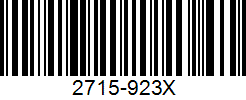Eksplorasi Potensi Wisata Desa Guwang Kecamatan Sukawati Kabupaten Gianyar Bali
Abstract
Bali experienced a surge in foreign tourist arrivals during 2023, amounting to 5,237,258 people, which shows opportunities for tourism in Bali. Guwang Village as one of the areas in Sukawati District has tourism potential which is rich in culture, nature and local traditions. Guwang Village has potential attractions, one of which is the Barong and Keris Dance Performance. Based on the results of interviews with the management, the level of tourist visits has not shown the increase that the management hoped for and not many people are aware of the performance. This service is carried out through field observations to see real conditions in the field. The team consisting of lecturers with expertise in Tourism, Arts and Culture collaborated with students from the Master's Study Program in Cultural and Religious Tourism in exploring the potential for developing Guwang Village. The results and findings show that the method of introducing attraction products has been widely implemented. However, it is necessary to add content with other hashtags to help increase visits and marketing to introduce the potential of the Barong and Keris Dance.
Keywords: tourism, Guwang Village, Barong and Keris Dance





